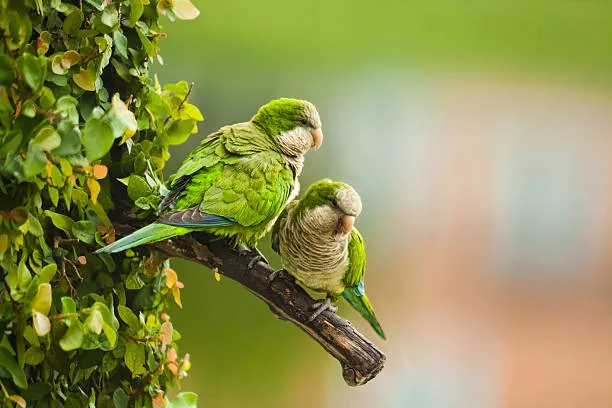Quaker parrots, also known as Monk parrots or Quaker parakeets, are captivating and intelligent birds that have captured the hearts of avian enthusiasts around the world. While they are commonly kept as pets, it is essential to understand their natural habitat and geographical distribution. In this article, we delve into the origins and natural habitats of Quaker parrots, shedding light on the regions they inhabit and the environmental conditions that support their survival.
Overview of Quaker Parrots:
Quaker parrots are medium-sized birds that measure approximately 11 inches in length, weigh around 3.5 ounces, and have a lifespan of up to 30 years in captivity. They are well-known for their vibrant green plumage, gray forehead, and bright blue flight feathers. Quakers are intelligent, affectionate, and highly social birds that form strong bonds with their owners. They are also prolific talkers and can learn many words and phrases.
Native Range of Quaker Parrots:
The Quaker parrot’s native range encompasses parts of South America, specifically the countries of Argentina, Bolivia, Brazil, Paraguay, and Uruguay. It is believed that these parrots originated in the temperate regions of South America, particularly in the grasslands, savannas, and lowland forests of these countries.
Adaptability and Introduction to New Habitats:
One of the remarkable characteristics of Quaker parrots is their adaptability to various environments. Over time, they have successfully colonized new habitats beyond their native range. The exact origins of introduced Quaker parrot populations in regions outside South America are often traced back to escaped or released pets.
Today, established wild populations of Quaker parrots can be found in numerous countries across the globe, including the United States, Mexico, Spain, Italy, the United Kingdom, Israel, and Japan. In these regions, they have adapted to a wide range of climates, from tropical to temperate, and have displayed their resilience by establishing thriving colonies.
Preferred Habitat:
In their natural habitat, Quaker parrots typically inhabit a diverse range of landscapes. They are adaptable birds that can thrive in various environments, including grasslands, savannas, agricultural fields, forest edges, and urban areas. They have shown a particular affinity for regions with sufficient food sources, nesting sites, and water availability.
Nests and Colonies:
Quaker parrots are unique among parrot species in their nesting behavior. They are known for constructing large communal nests, often referred to as “parrot condos” or “Quaker parrot condominiums.” These nests are made from twigs and branches, and they serve as communal shelters for multiple pairs of birds within a colony. The nests are typically located in trees, on power poles, or even on man-made structures like buildings and bridges.
The formation of these communal nests promotes social interaction and cooperation among Quaker parrots. It also provides them with protection against predators and adverse weather conditions.
Quaker Parrots as Pets:
Quaker parrots are popular pets due to their intelligence, affectionate nature, and amusing personalities. They are relatively easy to care for and require a balanced diet of seeds, fruits, vegetables, and occasional treats. Quakers also need regular exercise and social interaction, either with their owners or other birds.
When keeping quaker parrots as pets, it is essential to provide them with a spacious cage that allows them to stretch their wings and move around freely. The cage should also be equipped with perches, toys, and other enrichment activities to keep the birds mentally stimulated. Quakers also require fresh water and regular bathing to maintain healthy feathers and skin.
Conservation Status:
In their native range, Quaker parrots are classified as a species of least concern by the International Union for Conservation of Nature (IUCN). However, in regions where they have been introduced, their populations may face various conservation challenges.
In some areas, Quaker parrots are considered invasive species due to their ability to compete with native bird species for resources. Additionally, their nesting behaviors can sometimes cause conflicts with human activities, such as damage to crops or infrastructure.
Conclusion:
The Quaker parrot’s native range in South America and its successful establishment in various regions around the world illustrate the adaptability and resilience of this remarkable bird species. Their ability to thrive in diverse environments, including both natural and urban landscapes, highlights their remarkable ecological versatility.
Understanding the natural habitat and distribution of Quaker parrots not only provides valuable insights into their origins but also contributes to efforts aimed at balancing their presence in regions where they have been introduced. By appreciating and respecting their natural habitat, we can ensure the conservation of these charismatic birds, both in their native range and in the regions they now call home.
Related topics:
- How long do Quaker Parrots live?
- What Does a Quaker Parrot Look Like?
- Can Quaker Parrots Eat Bananas?


 Facebook
Facebook  Instagram
Instagram  Youtube
Youtube 